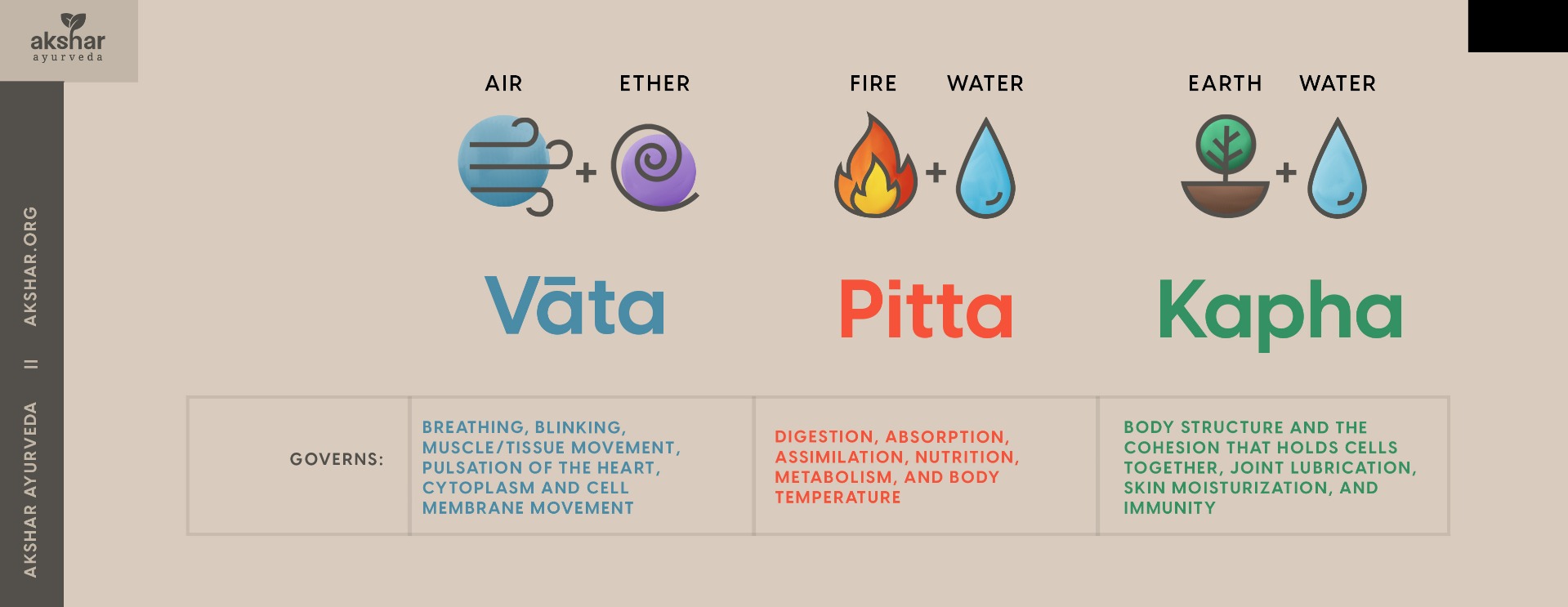Introduction to the Doshas

Authors: Leena Pandya, ND and Meera Patel, AP
Have you ever wondered why a treatment worked so well for a friend, but did nothing for you? Why some herbs or medications alleviate symptoms for some people, but not for others? Why particular lifestyle changes can be a miracle in certain cases, but cause harm in others?
Naturally, the answer lies in interindividual variation. We all know that everyone’s genetic makeup, upbringing, diet, lifestyle, and experiences have all been different from each other, so why wouldn’t responses to treatment also vary? In fact, they would, and they do. This is what distinguishes Ayurvedic medicine from many modern forms of medicine. It places great significance on personalization, catering every single aspect of a treatment specifically for each individual.
In order to accomplish this, Ayurveda relies on an individual’s constitution or unique body type, which is largely determined by genetics. An individual’s constitution is composed of varying proportions of three biological elements – vāta, pitta, and kapha – collectively termed the doshas. The doshas are the three principles in Ayurvedic philosophy that govern both psychophysiological responses and pathological changes in the body. Every person possesses differing ratios of these three entities, and the balance amongst them informs appearance, personality traits, emotional proclivities, and even medical tendencies.
According to Ayurvedic philosophy, vāta, pitta, and kapha are necessary energy complexes that form the foundation of our physiology – each serving a different, but vital function. Vāta is the energy of movement; pitta is the energy of digestion and metabolism; and kapha is the energy of structure and lubrication. Each dosha is composed of the five basic elements (ether, air, fire, water, and earth) that make up the entire cosmos. Two of these elements predominate in each dosha:

An individual’s vāta, pitta, and kapha proportions are determined upon conception, however, the percentage of each dosha can shift over time under the influence of diet, lifestyle, and environment. Such a deviation can create health issues and the key to achieving optimal health actually lies in the reversion of one’s current dosha imbalance (vikruti) to one’s innate dosha balance (prakruti). With the alignment of vikruti to prakruti, the quality and quantity of vāta-pitta-kapha approaches normal, and health is restored. Equilibrium amongst the doshas can be reestablished through the proper diet, lifestyle, environment, mental state, and sometimes herbal medications tailored to the individual’s imbalance.
Although too much or too little of any dosha can create health issues and particular doshas are certainly correlated to specific ailments, no single dosha is inherently bad. Each dosha serves a crucial objective in our body and ultimately informs us of our physiological tendencies. Knowing one’s vāta-pitta-kapha balance can be truly empowering as it teaches us about our strengths and weaknesses, providing both self-awareness and a blueprint to rebalance the system and restore health. To discover your dosha and determine which forms of support are specifically beneficial for you, take our dosha self-assessment today and let akshar ayurveda tailor a treatment just for you.
Reference
Lad, V. (2002). Universal Attributes and Doshic Theory. In 929881568 728591830 V. Lad (Author), Textbook of Ayurveda (pp. 25-44). Albuquerque, NM, NM: Ayurvedic Press.
